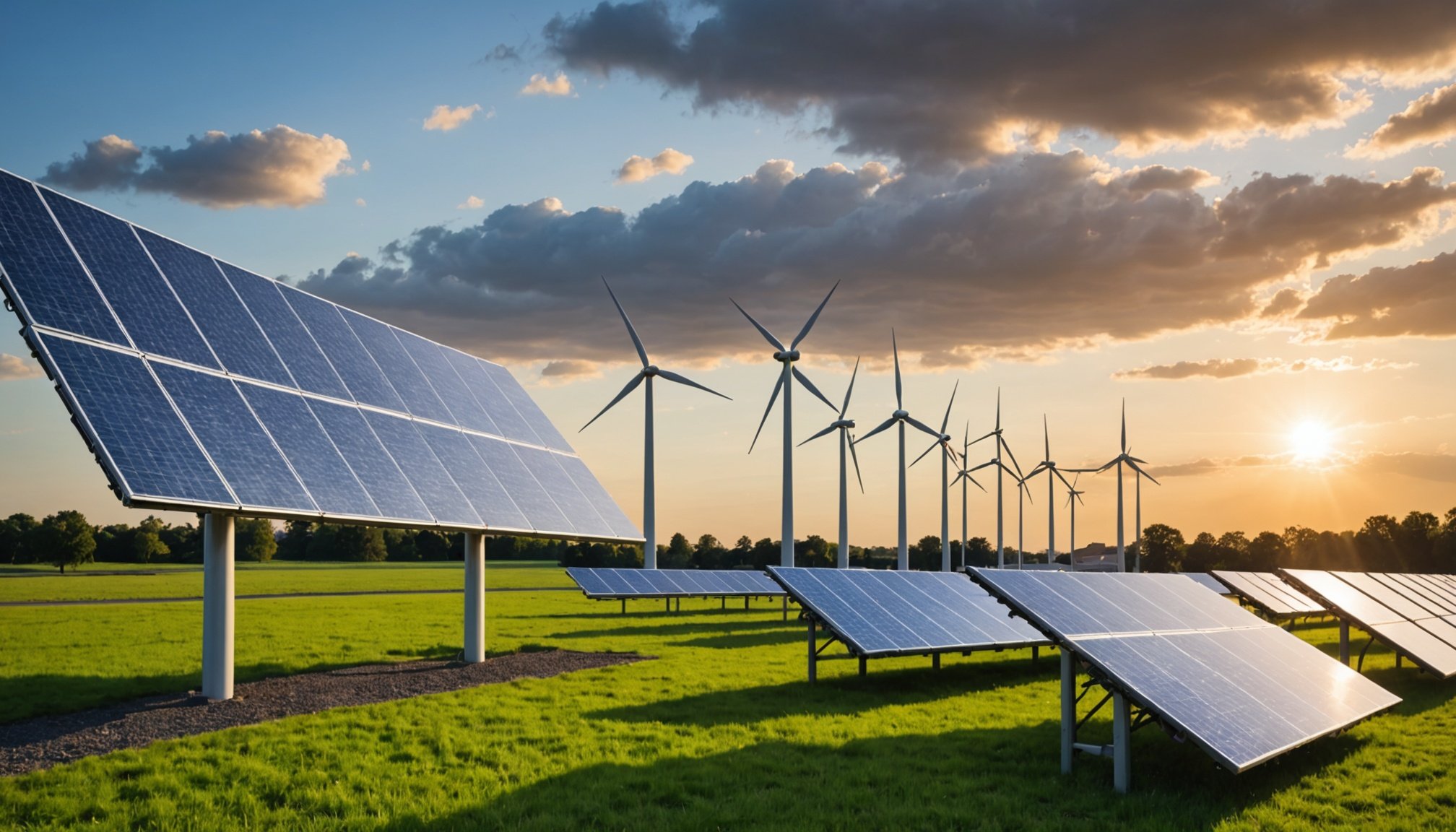Vallourec’s New Energies solutions drive the transition toward a sustainable future by innovating in renewable technologies like hydrogen and bioenergy. Combining cutting-edge materials with strategic investments, they support cleaner power generation and reduce environmental impact. This approach not only advances energy diversification but also empowers industries to meet global demands sustainably and efficiently.
Understanding New Energies and the Global Shift Toward Renewable Solutions
Defining New Energies and Their Global Importance
Modern energy transition hinges on a diverse portfolio of solutions—this is especially clear as governments, industries, and communities explore the potential of new energies with vallourec solutions to advance both innovation and sustainability. New energies refer to a broad set of renewable energy types designed to cut reliance on fossil fuels, enable decarbonization, and support robust climate change energy solutions. Unlike traditional energy sources, these technologies—including solar, wind, hydrogen, geothermal, offshore wind, and bioenergy—emphasize low carbon emissions, system flexibility, and integration across sectors. Their growing prominence reflects global pressure for clean energy transition, focusing not just on reducing emissions but also on securing energy access and supporting long-term energy sector decarbonization.
In parallel : What Are the Essential Steps for UK Healthcare Providers to Implement AI Diagnostics?
Core Renewable and Alternative Energy Sources
Primary renewable energy technologies form the crux of sustainable energy solutions. Solar power technology has advanced quickly, with new photovoltaic cells and solar panel advancements making solar electricity more affordable and efficient even in challenging climates. Wind energy generation—from small communities to vast offshore wind farms—now leverages bigger turbines, secondary steel foundations, and smart grid integration for improved performance.
In the area of hydrogen, green hydrogen innovation unlocks alternatives for heavy industry, transport, and long-term energy storage. Hydrogen can be produced cleanly and used in fuel cells, providing a pathway to low carbon mobility and decarbonized industries. Geothermal energy applications provide non-intermittent renewable power by harnessing subsurface heat, while biomass energy sources convert organic waste into clean power and fuels. Offshore wind and bioenergy solutions—specifically those resistant to corrosion—continue to improve the reliability and scope of renewable electricity production.
Topic to read : Essential housing solutions for remote workers on the move
New Energies and Decarbonization Goals
Energy transition strategies are deeply aligned with international climate objectives. Moving toward zero emission energy sources is essential for achieving carbon neutrality targets. These technologies enable sectors like transport, logistics, and manufacturing to cut emissions, supporting ambitions set by the Energies Coalition for Transport & Logistics and other key industry stakeholders. Advanced energy storage systems, such as lithium batteries and long-duration storage, play a vital role in stabilizing power grids and maximizing renewable potential.
The cross-sector impact is unmistakable: renewable energy technologies increase energy market resilience, reduce exposure to global fuel price shocks, and support high-quality job creation. By 2025, smart meters, distributed energy resources, and clean power generation are expected to make electricity from renewables the new norm for both developed and emerging markets. This collective shift not only accelerates decarbonization but also makes sustainable energy solutions more inclusive and adaptive, fostering a stronger foundation for a cleaner, more flexible, and future-ready energy sector.
Vallourec’s Innovative Solutions in New Energies
Geothermal energy applications: corrosion-resistant boiler tubes
Geothermal energy applications demand materials that can endure extreme heat and aggressive chemistry underground. Vallourec’s corrosion-resistant boiler tubes reduce failure risks in geothermal energy applications, thus improving the operational reliability of renewable energy types where heat and mineral exposure threaten standard solutions. This not only maximizes geothermal energy applications but also supports energy sector decarbonization and resilient, sustainable energy solutions.
Green hydrogen storage: large capacity, high-pressure solutions for storage and mobility
Vallourec’s expertise in large capacity, high-pressure storage underpins green hydrogen innovation by enabling the secure transfer and storage of hydrogen fuel advancements. Such systems support clean energy transition and allow for flexible hydrogen use in mobility, contributing to future clean energy innovations and broadening the scope of sustainable power systems reliant on green hydrogen innovation and energy storage systems.
CCUS: tubular solutions supporting CO2 capture, transport, and storage
Carbon capture utilization & storage (CCUS) solutions require safe, robust tubular infrastructure for transporting and storing CO₂ underground. Vallourec’s CCUS-focused tubular products prevent leakage, enabling reliable climate change energy solutions for industries aiming for carbon neutrality targets. This strengthens future clean energy innovations in reducing carbon emissions and supporting renewable electricity production across sectors.
Solar power advancement: PV plant tubing for challenging environments
Solar power technology in utility scale or challenging locations benefits from durable PV plant tubing developed by Vallourec. These improve solar panel advancements resilience and ensure stable renewable electricity production, addressing energy transition challenges and energy storage systems compatibility in remote or harsh environments.
Bioenergy support: corrosion-resistant solutions for biomass energy production
Bioenergy and biofuels systems are enhanced by Vallourec’s boiler tubes built for high corrosion environments. These solutions secure the integrity of biomass energy sources operations and advance energy efficiency improvements by ensuring plant reliability and longevity, thus driving energy sector jobs and clean power generation.
Offshore wind foundations: secondary steels and solutions for offshore installations
For offshore wind farms, secondary steels and advanced foundation solutions from Vallourec increase wind power potential and the effectiveness of renewable electricity incentives. These strengthen the base for wind energy generation, supporting wind turbine innovations while meeting the demands of offshore renewable projects and a decarbonized power grid.
Industry Developments: Market Trends, Policy Impact, and Key Players
Overview of current global trends in renewable energy adoption and investment
Energy market trends in 2025 reflect a pronounced pivot toward renewables, driven by robust renewable energy policy frameworks and growing public demand for clean solutions. Investment in solar power technology and wind energy generation, combined with advances in hydrogen fuel advancements and smart grid integration, signals a new era for sustainable energy. Government renewable initiatives and enhanced clean energy financing models continue to expand access to zero emission energy sources and facilitate the proliferation of renewable energy companies globally.
The influence of policy frameworks and government initiatives on market growth
Clear and stable renewable energy policy has unlocked large-scale growth, especially where renewable electricity incentives and solar incentives programs are enforced. Government renewable initiatives underpin efforts to decarbonize the energy sector, propelling the adoption of hydrogen production methods and utility scale solar power. Energy transition strategies crafted at the legislative level directly support energy market trends, bolstering community solar projects and renewable energy in transportation applications.
Spotlight on major industry players and innovators driving the clean energy sector
Renewable energy companies and emerging clean tech startups spearhead progress through hydrogen fuel advancements, wind turbine innovations, and sustainable power systems. Major energy sector players specialize in hydrogen fuel advancements, advanced energy storage systems, and carbon emissions reduction, shaping global renewable energy growth. Distinctive new energy company strategies in 2025 focus on green hydrogen innovation, large-scale wind farm development, and interconnected renewable energy supply chains.
Challenges, Innovation, and the Path Forward for Global Energy Transition
Barriers to Widespread Adoption and Integration of New Energy Sources
Energy transition challenges persist, particularly with renewable energy adoption barriers rooted in regulatory, financial, and infrastructural complexities. Regions face uneven access to capital, insufficient policy frameworks, and underdeveloped grid networks. These factors limit both the pace and reach of renewable technology in the power sector. Additionally, intermittent renewable supply creates hurdles for renewables and grid integration. Addressing these energy transition challenges is central to reducing reliance on traditional fuels.
Technological Breakthroughs Addressing Grid Stability and Efficiency
Advances in clean energy storage, including next-generation batteries and hydrogen storage, are critical for seamless renewables and grid integration. Improved storage capabilities stabilize grids and enable the broader use of intermittent sources. Energy efficiency improvements—such as superior smart grid controls—directly support renewable energy research by maximizing output and minimizing waste. These developments are reshaping the energy transition in the power sector, making renewables more dependable and scalable.
The Future Outlook: Research, Innovation, and Collaborative Solutions
Ongoing renewable energy research fuels continuous progress. Collaboration between energy companies and research hubs results in innovative solutions to energy transition challenges. Priority is placed on comprehensive energy efficiency improvements, scalable energy storage, and expanded grid connectivity. As these collaborative efforts mature, the sector trends toward cleaner, more resilient systems—driving a sustainable energy transition globally.






